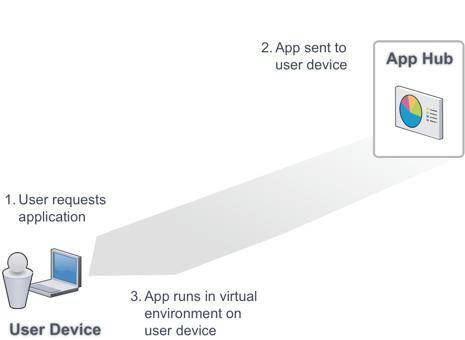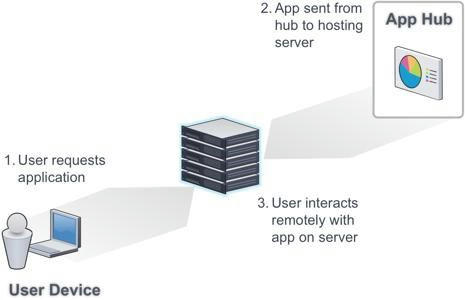XenApp Explained
Website Visitors:On-demand application delivery with Citrix XenApp How application virtualization and session virtualization work
Citrix XenApp is an on-demand application delivery solution that comprises application virtualization and session virtualization technologies.
Understanding application virtualization Citrix application virtualization technology isolates applications from the underlying operating system and from other applications to increase compatibility and manageability. As a modern application delivery solution, XenApp virtualizes applications via integrated application streaming and isolation technology. This application virtualization technology enables applications to be streamed from a centralized location into an isolation environment on the target device where they will execute. With XenApp, applications are not installed in the traditional sense. The application files, configuration, and settings are copied to the target device and the application execution at run time is controlled by the application virtualization layer. When executed, the application run time believes that it is interfacing directly with the operating system when, in fact, it is interfacing with a virtualization environment that proxies all requests to the operating system.
XenApp is unique in that it is a complete system for application delivery, offering both online and offline application access through a combination of application hosting and application streaming directly to user devices. When users request an application, XenApp determines if their device is compatible and capable of running the application in question. The minimum requirements of a target device are a compatible Windows® operating system and appropriate Citrix client software. If the user device meets minimum requirements, then XenApp initiates application virtualization via application streaming directly into an isolated environment on the user’s device. In the event that the user device is not capable of running a particular application, XenApp initiates session virtualization.

Understanding session virtualization
Session virtualization uses application streaming to deliver applications to hosting servers in the datacenter. XenApp then connects the user to the server to which the application has been delivered. The application then executes entirely on the server. The user interacts with the application remotely by sending mouse-clicks and keystrokes to the server. The server then responds by sending screen updates back to the user’s device. Whereas application virtualization is limited to Windows-based operating systems at this time, session virtualization via XenApp allows any user on any operating system to access any application delivered by IT. As a result, XenApp enables Windows, Mac, Linux, UNIX, thin clients, iPhone®, Windows Mobile® devices, and even Symbian- and Java-enabled devices to run any applications using session virtualization. Furthermore, session virtualization leverages server-side processing power which liberates IT from the endless cycle of PC hardware refreshes which are typically needed to support application upgrades when using traditional application deployment methods.

Using application virtualization and session virtualization together
In both application virtualization and session virtualization, user interaction with the application is seamless. Printers, drives, peripherals, and even the clipboard work in the exact same manner as if the application were installed. As a result, XenApp reduces the cost of application management and related costs by up to 50 percent and enables a better-than-installed experience for users when compared to traditional application deployment models.
More Features about Citrix Xenapp are given Here
Posted in Citrix
Want to learn more on Citrix Automations and solutions???
Subscribe to get our latest content by email.